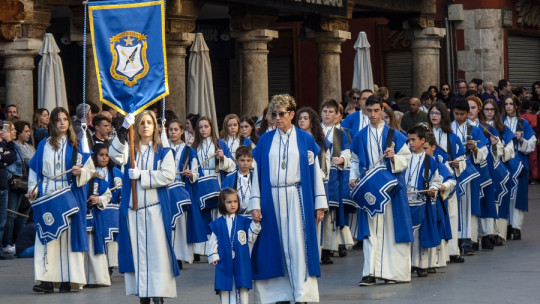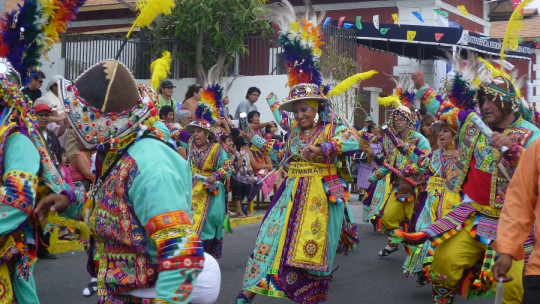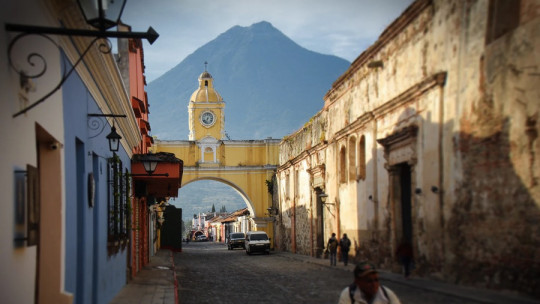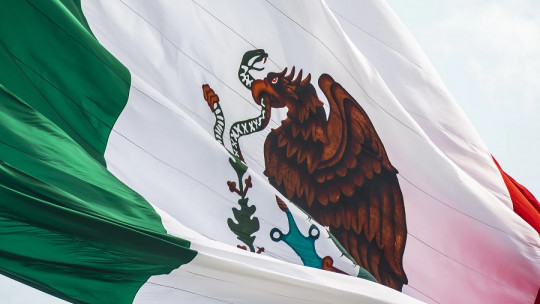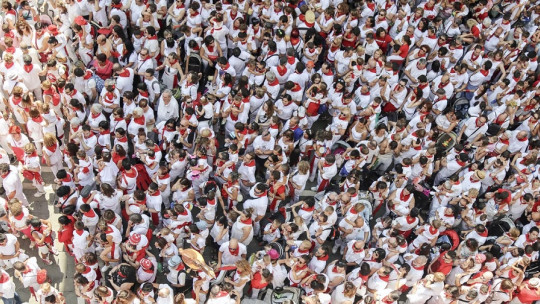
Navarra, whose official name is the Foral Community of Navarra, whose capital is the city of Pamplona, is a region with a very interesting history and cultural particularities that are reflected in its traditions.
Here We will talk about those customs and traditions of Navarra in order to highlight the events, rituals and activities most characteristic of each one.
The most important traditions, customs and festivities of Navarre
Among the many customs and traditions of Navarra we are going to highlight its Christmas rites, the carnivals of Navarra and other traditional festivals in the area such as “El Rey de la Fata”, “La Javierada”, “La Bajada del Ángel”, and, as could not be missed, “Los Sanfermines” which is celebrated every July 7 in Pamplona, a festival of international recognition.
1. Christmas in Navarra
Among the main customs and traditions of Navarra, it is worth including the traditional rituals typical of this area, beyond the dinners, nativity scenes and Christmas carols typical of this time of year.
In Navarra, as in the Basque Country, it is tradition the Olentzero, being a mythological chickadee who distributes gifts on Christmas Day in Navarre, the Basque Country and also in the French Basque Country area The origin of this Christmas character from Basque tradition is found in the area of Lesaca (Lesaka) in Navarra and he is commonly represented as a somewhat ragged, strong man, whose clothes are stained with charcoal.
On the other hand, Olentzero is a man who lives isolated from society and dedicates himself to making charcoal in the mountains, only coming down at Christmas to distribute gifts to homes. Originally the Olentzero predates the custom of celebrating Christmas parties, so At first this character was located within the celebrations that took place on the winter solstice ; However, over time he established himself within the Christmas celebrations, becoming a character who brings gifts to the children on Christmas Day.
Another of the customs and traditions of Navarra at Christmas time is the water ritual that is celebrated every year in various towns in the area, the most famous being the one celebrated in the town of Urdiáin, where on December 31 the participants in this celebration They are in charge of collecting water from the source with their vessels to offer it to the neighbors and the authorities of their respective localities in exchange for the bonus ; Yes, before collecting the water they wait at the fountain until the 12 bells ring that announce the arrival of the New Year.
It is also tradition that in the celebration of the water rite some couplets are recited in Basque in each house where they stop to receive the Christmas bonus.
2. The King of Faba
Among the customs and traditions of Navarra during Christmas, it is worth highlighting what is known as “The King of Faba”, a celebration that comes from a traditional children’s festival in Navarra in which a child was crowned king in a ceremony which was carried out in the old way, just as it was done in the Middle Ages, being a custom that has remained alive to this day every January in a castle, a palace or a church.
The crowned child must be the one who has been awarded with the bean that is hidden in the roscón de reyes, being proclaimed King of Navarra. On the other hand, it is worth mentioning that As a result of this tradition, the custom arose that whoever finds the bean in the roscón de reyes becomes the “king of the house.” so the cardboard crown that the roscones usually bring with them inside the box must be placed.
3. Carnivals in Navarra
Among the main customs and traditions of Navarra, its Carnivals could not be missing either, with their unique character, worth highlighting those held in Ituren and Zubieta, a festival of tourist interest in which the residents of both towns participate by carrying out various activities. , like the parade, disguised with lace petticoats, sandals, sheep twins, colored scarves around their necks, a swab of horse mane in their right hand and also with conical caps with ribbons.
The Ituren and Zubieta Carnivals are celebrated in the last week of January, earlier than in the rest of the towns On Monday there is a parade through the streets of Zubieta, while on Tuesday there is a parade through the streets of Ituren.
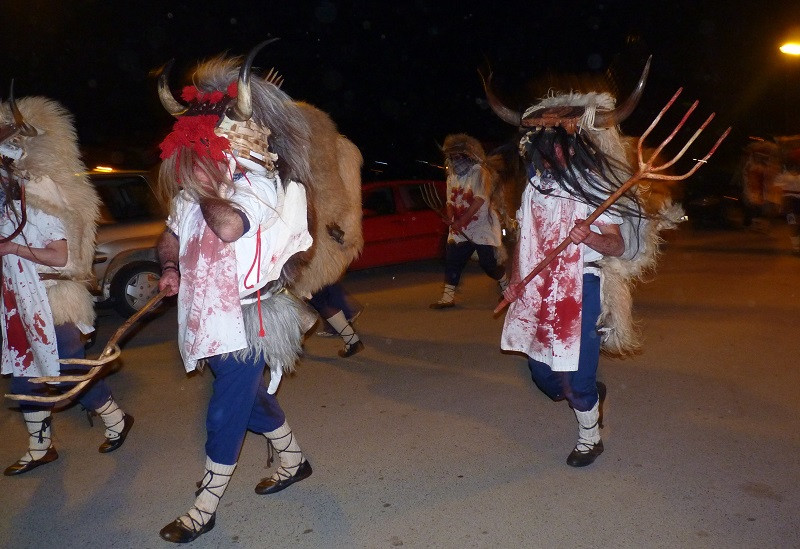
On the other hand, one of the most notable Carnivals due to its wealth of traditional characters is that of the town of Lantz. As night falls, the neighbors represent various characters performing a performance that consists of capturing a bandit known by the name of Miel Otxin. Other of the most notable characters of this Carnival are Ziripot, Zaldiko, Arotzak and Txatxo.
Finally, it is worth mentioning the Alsasua or Altsasu Carnivals, having been declared a festival of tourist interest in Navarra. Its celebration begins on Sunday with a children’s carnival celebration. On Tuesday at dusk is the parade of costumed adults, among which the Momotxorros stand out, characters who carry bull horns, with sheep’s wool back protectors and also dressed in blue pants, black sandals and white socks.
4. La Javierada
Another of the most important customs and traditions of Navarra is the pilgrimage known as La Javierada, which is carried out to the Javier Castle in honor of the patron saint of the Kingdom of Navarra Francisco de Javier, currently being the centerpiece along with San Fermín. This pilgrimage is done in two sessions, starting in some towns located in the south of Navarra. The first pilgrimage begins on the first Sunday that falls between March 4 and 12, while the second would be on Saturday of the following week.
5. Holy Week in Navarra
The Bajada del Ángel, a ceremony that is celebrated on Easter Sunday every year in the town of Tudela, is another of the best-known customs and traditions of Navarra, and it is that In it there is a representation of the appearance of the angel Gabriel at the moment in which he announces the resurrection of Jesus to Mary
Other acts of interest that take place during Holy Week in Navarra are the procession of the Encounter between the Blessed Sacrament and the Dolorosa and also the persecution of Judas in the town of Cabanillas; while in the town of Luzaide-Valcarlos the traditional Easter dances stand out in the hamlets and neighborhoods on Easter Sunday, this tradition being known as the “bolantes de Luzaide/Valcarlos”.
- You may be interested: “The 8 most famous traditions and customs of Galicia”
7. Sanfermines
Among the customs and traditions of Navarra, the world-famous Sanfermines could not be missed, which are celebrated every year in the city of Pamplona from July 6 to July 15, both inclusive, being a celebration that has been declared a Festival of Interest. International Tourist.
The Sanfermines begin with the famous launch of the chupinazo that takes place on July 6 at noon from the balcony of Pamplona City Hall and end with a farewell song (Poor me…) on July 15 at 00:00 hours.
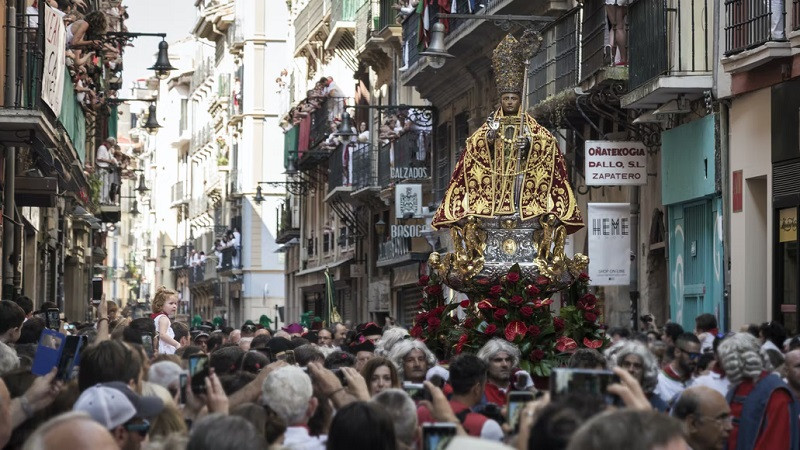
Throughout these festivities, multiple activities are carried out in various events, including what is perhaps the most famous of these festivities, the running of the bulls, which consists of a race of approximately 875 meters in which thousands of people participate running in front of 6 bulls and 6 halters concluding the tour in the city’s bullring, being an event that takes place every day between July 7 and 14, including both days.
Due to the danger of the bulls and the long distance of the route, participants normally travel only a certain part of the route, making way for the following ones.
During the Sanfermines, other events are also carried out such as the procession in honor of San Fermín on July 7, the morning reveries, the Riau Riau, the fireworks, the troupe of giants and bigheads, among others, being characteristic of this festival. the attire usually worn by participants dressing in white and red.


